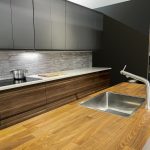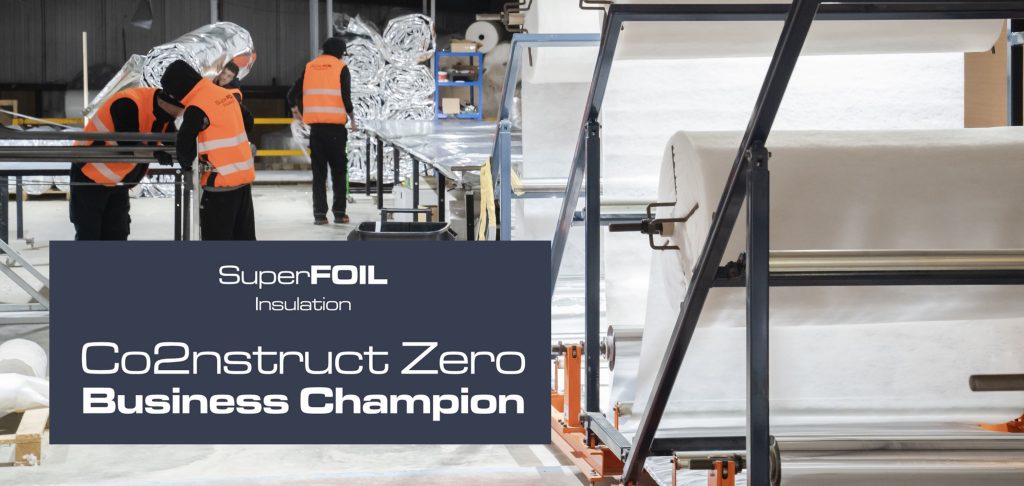Time to launch a two-pronged waterproofing attack

Used more than any other man-made substance, concrete has become the material of choice for buildings across the globe, from industrial to commercial and even residential. Quality concrete, when fully compacted and cured, is effectively water-resistant. However, concrete is porous, making it susceptible to damage and deterioration if water penetrates – as it can via defects.
Up to standards
Opting for a waterproofing solution that is certified to meet national standards is key. Widely recognized across continental Europe, as well as in the UK & Ireland by construction engineers, design consultants and regulators, the UK’s British Standards Institution (BSI) Code of Practice for Protection of Below Ground Structures against Water from the Ground (BS 8102:2009) gives recommendations and guidance on methods of dealing with, and preventing, the entry of groundwater into a structure below ground level. The standard divides basements into three grades: Grade 1 – basic utility (car parking, plant rooms excluding electrical equipment). Grade 2 – better utility (workshops and plant rooms requiring drier environments than Grade 1) and Grade 3 – habitable (ventilated residential and commercial areas).
According to the standard, there are three types of suitable waterproofing methods, Type A, B and C:
Type A (sometimes known as barrier or tanking) protection is dependent on a separate waterproof barrier system being applied to the external walls and floor slabs of a basement or underground structure, forming a barrier between the structure and any groundwater present.
Type B relies on the design and materials in the external shell of the structure itself. Structures should be constructed of reinforced water-resistant concrete or structural steel.
Type C incorporates an internal water management system. Groundwater is allowed to penetrate through the external wall or floor as far as the cavity between the external shell and internal lining, collecting it via a cavity drain membrane and then diverting it into safe, controlled drainage.
For builders in the UK, standards set by the UK’s leading independent standard-setting body and provider of warranty and insurance for new homes – The National House Building Council (NHBC) – is also relevant. The NHBC’s Chapter 5.4 ‘Waterproofing of basements and other below ground structures’ is more specific than BS 8102:2009 and insists that a combined approach to waterproofing should be used for Grade 3 environments.
A combined approach for double the protection
To protect below ground structures against both water and corrosion, a two-pronged approach is required. This is why many concrete structures feature a second waterproofing system, to guarantee protection from damage caused by water penetration. Instead of just relying on one method of waterproofing protection, owners and contractors are now using systems that provide an additional layer of protection – via either a combination of integrally watertight concrete and pre-applied membrane – type A+B – or integrally watertight concrete and cavity drainage – type B+C.
Solid foundations
The first line of defence when waterproofing a structure is to address the material of which the building is constructed. When faced with concrete structures, enhanced concrete performance through the use of chemical admixtures, either in powder or in liquid form, is the first line of defence. Admixtures that combine water repellent and shrinkage reduction technologies result in reduced cracking in restrained concrete, which improves the water resistance of the structure. Products such as GCP’s Adprufe 100 admixture also provide properties that improve surface finish, strength and workability, and result in easier, more complete compaction.
As easy as ABC
Once concrete has been made watertight, a waterproofing membrane that is designed to protect below ground structures against water ingress, gas, vapours and moisture provides comprehensive protection. For Type A+B waterproofing protection, GCP’s Adprufe system combines its integrally watertight concrete with Preprufe 300R Plus waterproofing membrane, a robust HDPE film that fully bonds with the concrete’s surface, creating a permanent and integral bond that prevents ingress or migration of water in and around the structure.
A pioneering approach put into practice
GCP has used this method to waterproof areas within a multi-billion-pound redevelopment in the UK. The huge 14-acre development includes flats, offices, restaurants, leisure and retail buildings and is due to be completed this year.
For Type B+C applications, in combination with integrally watertight concrete, GCP uses its Hydroduct CF cavity drain system to form an efficient drainage passage, isolating internal finishes from the structure. But for occasions when a range of combinations is required to ensure the most comprehensive waterproofing solution, using both Type A+B and Type B+C combinations is a possibility.
On a redevelopment of a London-based building, GCP used its Hydroduct CF high density polyethylene combined cavity former to provide a continuous drainage path against the internal face of concrete floors and walls. On this occasion, the contractor did not want to use just one waterproofing system against the entirety of the basement walls. Instead, a more efficient mix-and-match solution featured Type A+B Adprufe admixture-enhanced concrete and Preprufe membrane applied to the raft slab and some vertical sections, while integrally watertight concrete and Hydroduct CF drain system was used in a specific grade 3 area for enhanced protection.
Combined and comprehensive
Using two methods of waterproofing instead of one is an optimal way to ensure a comprehensive waterproofing solution. Instead of seeing this as an extra burden, contractors and owners are rightfully choosing to double-up on protection, starting with integrally watertight concrete, and adding a pre-applied membrane or cavity drainage system. When it comes to a waterproof belowground structure, it always pays to double up.




















